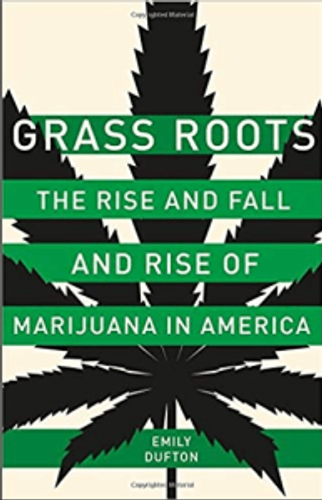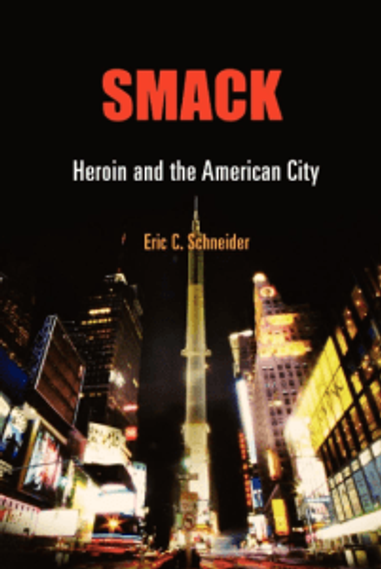Teaching Points: Using Drugs as a Gateway to Historical Methods
- Adam Rathge
- Jan 8, 2019
- 4 min read
Updated: Aug 29, 2023
Editor’s Note: Today’s post comes from Dr. Adam Rathge, director of enrollment strategies and part-time history professor at the University of Dayton. Rathge is also a drug scholar and a longtime friend of Points. He continues our Teaching Points series here, explaining how drug and alcohol history can be brought into the classroom and can be a vehicle for understanding historical methods. Enjoy!
During the coming Spring semester at the University of Dayton, I’ll be teaching HST 299 – Historical Background to Contemporary Issues. This will be my second time teaching the course. It is offered once a year by the History Department and open to students of all majors, with rotating topics driven primarily by faculty expertise and current “headline news” issues. In my case, this means teaching about drugs by focusing on current trends in marijuana legalization and the opioid crisis. From the department’s perspective, the topics are somewhat secondary to the true purpose of the course, which is designed to “focus on the methodology of history as a discipline and on the utility of historical analysis for understanding contemporary political, social and economic issues.” As such, in my version of the course, drugs become the gateway to teaching historical methods.
Over the fifteen-week semester, I divide the course into three, roughly five-week blocks. The first block covers recent developments with marijuana legalization. The second block explores the ongoing opioid crisis. The third and final block provides time for scaffolding the research process on a headline news topic of each student’s choosing. In essence, the first two blocks are designated topics on contemporary issues that allow the class to work through a guided model of historical methodology together, while the third allows them to put those skills into practice for themselves on a topic of interest. Each five-week block, therefore, introduces not only the topic at hand but also skills relevant to reading, writing, and thinking like a historian.

Primed with knowledge of the headline news and historical background of marijuana legalization in the United States, the course turns back to historical methods, covering topics such as: scholarly publishing and quality control; history and historiography as a discipline; images and political cartoons as primary sources; and the use of chronology and timelines. Each of these exercises is supplemented by short readings, worksheets, and questions. We also reference back to the historical methodologies and sources used in Dufton’s Grass Roots. These weeks are designed to help students learn more about the history of marijuana in the United States, while simultaneously becoming more familiar with the historian’s craft.

Though Smack is now 10 years old, I chose it as the historical monograph for a number of reasons. First, it was published by an academic press, complete with jargon, footnotes, etc. that serves as a foil to Dufton’s Grass Roots, which was published by a trade press. Second, Smack lays a clear foundation for demonstrating the multiple waves of opioid panics in our nation’s history, something that headline news often lacks. Finally, and perhaps most importantly, Smack was published prior to the current opioid crisis and makes the argument that heroin is a uniquely urban drug. This opens the door to an interesting classroom discussion about how Schneider’s book would be different if it was written and researched in light of the most recent opioid crisis. Indeed, my students are engaging this material in Dayton, Ohio, a place frequently labeled “the overdose capital of America.”
In addition to reading the headline news and Smack, students also view Frontline’s “Chasing Heroin,” a documentary film on the crisis. The film serves as a bridge to additional readings and perspective on addiction and drug abuse from historians, namely David Courtwright’s “Addiction and the Science of History” and David Herzberg, et al., “Recurring Epidemics of Pharmaceutical Drug Abuse in America: Time for an All-Drug Strategy.” These articles return the class to broader questions on the importance of historical research and methodology.
The final five-week block of the semester is devoted to scaffolding students through the research process for a headline news topic of their own interest. The end goal is for the student to develop a final report and presentation on their topic. After identifying their topic, students then assess the immediate and systemic issues based on headline news articles and seek out scholarly books and articles that can provide historical background. A guided session with a research librarian helps introduce students to the many resources available to them. Likewise, each week the class covers additional research topics, such as citations, bibliography, and peer-review. The final week culminates with a presentation bonanza, as each student presents a five-minute summary of the headline news and historical research on their chosen topic.
Reviews from last spring suggest the course was an overall success. Students were generally highly engaged in classroom discussions, and most made clear strides in their ability to think historically about present-day issues and headline news. Their chosen research topics insightfully covered issues such as gun control, physician-assisted suicide, abortion, vaping, “study” drugs, and more. Many students also remarked on how the course will change the way they consume headline news and social media in the future. I’ll be making some minor adjustments to the content and overall flow of the course, but I’m looking forward to another semester of insightful discussion and peddling historical methods.



